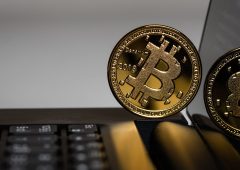Gold-Backed Stablecoins Challenge US Dollar’s Digital Dominance
23.03.2025 8:00 2 min. read Alexander Stefanov
Some experts believe that gold-backed stablecoins could become a dominant force in global finance, offering an alternative to digital assets pegged to the US dollar.
Bitcoin advocate Max Keiser argues that gold’s stability and reputation as a hedge against inflation make it a more attractive choice, especially for countries looking to distance themselves from US financial influence.
Keiser suggests that nations such as Russia, China, and Iran are unlikely to embrace stablecoins tied to the dollar. Instead, he predicts they will create their own gold-backed versions, leveraging their vast gold reserves—potentially exceeding publicly available estimates. If this trend materializes, it could disrupt Washington’s efforts to extend the dollar’s reach through stablecoins.
Gold-pegged stablecoins are already emerging in the market. In mid-2024, Tether introduced Alloy (aUSD₮), a digital asset linked to its existing Tether Gold (XAU₮), which represents ownership of physical gold.
Financial analyst Gabor Gurbacs, formerly with VanEck, has drawn comparisons between Tether Gold and the pre-1971 US dollar, when the currency was still backed by gold reserves. He pointed out that while much of the crypto sector has struggled, XAU₮ has risen by 15.7% this year, making it a compelling option for investors looking to preserve value.
Meanwhile, the US government has a different vision for the future of digital finance. Treasury Secretary Scott Bessent has underscored the importance of dollar-based stablecoins in maintaining the greenback’s global dominance. Speaking at a White House crypto summit on March 7, he emphasized that supporting dollar-pegged tokens would be a top priority.
Federal Reserve governor Christopher Waller has also expressed support for using stablecoins to reinforce the dollar’s position. To solidify this approach, lawmakers have been working on regulatory measures such as the Stable Act of 2025 and the GENIUS stablecoin bill, both aimed at creating a framework for tokenized fiat currencies.
-
1
Ethereum Overtakes Bitcoin in Retail FOMO as Traders Shift Focus to Altcoins
17.07.2025 8:05 2 min. read -
2
Fartcoin Price Prediction: FARTCOIN Could Rise to $2.74 After Major Breakout
17.07.2025 16:01 3 min. read -
3
Binance to Launch 2 New Contracts with 50x Leverage: Everything You Need to Know
10.07.2025 12:00 2 min. read -
4
Standard Chartered Becomes First Global Bank to Launch Bitcoin and Ethereum Spot Trading
15.07.2025 11:00 1 min. read -
5
ProShares Ultra XRP ETF Gets Green Light from NYSE Arca
15.07.2025 19:00 2 min. read
Bitcoin Dominance Holds Firm as Altcoins Show Early Signs of Rotation
Despite recent gains across select DeFi and RWA tokens, Bitcoin continues to dominate the crypto landscape, with the Altcoin Season Index sitting at 43/100, according to today’s CoinMarketCap data.
Why Most Americans Still Avoid Crypto Despite Growing Adoption
Cryptocurrency ownership in the U.S. has grown steadily over the past few years, but it remains far from widespread.
XRP Eyes Next Target as Bullish Crossover Sparks 560% Surge
XRP is back in the spotlight after crypto analyst EGRAG CRYPTO highlighted a powerful historical pattern on the weekly timeframe—the bullish crossover of the 21 EMA and 55 SMA.
Top 5 Most Trending Cryptocurrencies Today: Zora, Pudgy Penguins, SUI and More
Crypto markets are buzzing with momentum as several altcoins post double-digit gains and surging volumes.
-
1
Ethereum Overtakes Bitcoin in Retail FOMO as Traders Shift Focus to Altcoins
17.07.2025 8:05 2 min. read -
2
Fartcoin Price Prediction: FARTCOIN Could Rise to $2.74 After Major Breakout
17.07.2025 16:01 3 min. read -
3
Binance to Launch 2 New Contracts with 50x Leverage: Everything You Need to Know
10.07.2025 12:00 2 min. read -
4
Standard Chartered Becomes First Global Bank to Launch Bitcoin and Ethereum Spot Trading
15.07.2025 11:00 1 min. read -
5
ProShares Ultra XRP ETF Gets Green Light from NYSE Arca
15.07.2025 19:00 2 min. read


